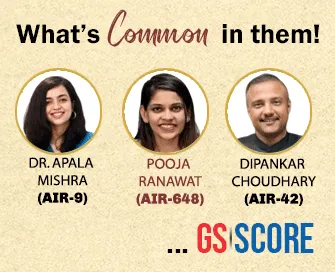

28th April 2025 (15 Topics)
Mains Issues
Context
U.S. President Donald Trump’s aggressive trade policies, particularly his tariffs, have stirred a lot of turbulence in global financial markets. One of the key impacts of this turmoil has been the increasing instability in U.S. bond markets, affecting both U.S. assets and international investors.
What is a Bond?
- A bond market is a marketplace for debt securities.
- This market covers both government-issued and corporate-issued debt securities.
- It allows capital to be transferred from savers or investors to issuers who want funds for projects or other operations.
- The debt, fixed-income, or credit market are all terms used to describe this sector.
- Bonds are often seen as safer investments than stocks because they offer fixed returns over time.
- Bond yield refers to the return on investment that a bondholder gets from holding a bond until it matures. The price of bonds fluctuates in the market: when the price of a bond goes up, the yield goes down, and vice versa.
- For example, if a bond has a face value of USD 100 and is bought for USD 90, the yield would be around 11.11%. Investors care about bond prices because these influence the yield they can earn, and yields are an important indicator of economic health.
- Types of bond markets (based on buyers):
- Primary Market: The primary bond market allows issuers to raise capital by selling bonds directly to investors, who can purchase them through public offerings or private placements. The transactions determine the initial pricing and terms of the bonds.
- Secondary Market: In the secondary bond market, bonds issued in the primary markets are bought and sold among investors. Bonds issued in the primary market are available to trade on various platforms, such as stock.
- Types of Bond Markets (based on Type of Bond): Treasury Bonds, Agency Bonds, Municipal Bonds, Corporate Bonds, Savings Bonds, Corporate Bonds
How do Inflation and Interest rates affect bonds?
- Inflation is the increase in prices over time. It makes money less valuable because you can buy less with the same amount of money.
- If inflation rises, interest rates tend to rise too. The Federal Reserve raises interest rates to control inflation, and this affects bond yields. When inflation is expected to rise, investors expect the Fed to raise interest rates, which pushes bond prices down and bond yields up.
- Trump’s Impact on Bonds: Trump’s tariffs (taxes on imports) make goods more expensive, which can lead to higher inflation. Investors, worried about this, start selling U.S. bonds because they’re afraid that inflation will eat into their profits. As a result, bond prices fall and yields rise.
Why Does This Matter for the Global Economy?
- Falling Dollar: As investors move away from U.S. bonds, the dollar loses value. A weaker dollar makes U.S. goods cheaper abroad, but it also means foreign investors lose money if their currency gets stronger.
- Higher Borrowing Costs: Rising bond yields cause interest rates to go up. This makes borrowing more expensive not just in the U.S., but worldwide.
- Capital Flight to Safer Assets: As U.S. assets become less attractive, investors may look for safer places to put their money, such as German bonds, which are seen as stable.

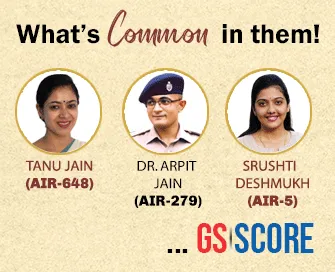
Mains Issues
Context
Scientists have developed a new RNA-based antiviral spray that offers strong protection against the Cucumber Mosaic Virus (CMV), a plant virus causing heavy crop losses, especially in India.
Plant Viruses and Crop Losses
- Farmers around the world lose nearly 40% of their crops every year to pests and diseases, according to the UN FAO.
- Plant viruses alone cause about USD 30 billion in global agricultural losses annually.
- Unlike bacteria or fungi (which can be treated with pesticides or fungicides), there is no direct cure for viral infections in plants.
- Cucumber Mosaic Virus (CMV) is a major culprit — it infects over 1,200 plant species including bananas, cucumbers, pumpkins, melons, cereals, and medicinal plants.
- In India, CMV leads to 25-30% losses in banana plantations and up to 70% infection rates in crops like cucumbers and melons.
- CMV spreads easily through sap-sucking insects like aphids, making it hard to control outbreaks.
Why traditional methods fall short?
- Plants naturally defend themselves using a method called RNA silencing, where they chop up the virus’s RNA to stop it from multiplying.
- However, this defence is imperfect — many small RNAs produced are not very effective, and viruses mutate fast, escaping plant immunity.
- Earlier techniques like:
- HIGS (Host-Induced Gene Silencing): Genetic modification of plants to produce virus-fighting RNA.
- SIGS (Spray-Induced Gene Silencing): Spraying RNA onto plants instead of modifying their DNA.
- But these methods had issues:
- Random RNAs were not always effective.
- Genetic modification faced regulatory hurdles and public resistance.
- Sprayed RNA degraded quickly outdoors (sunlight, rain, microbes).
What is the new solution?
- Researchers developed a new form of dsRNA (double-stranded RNA) designed to create only the most effective virus-fighting small RNAs (siRNAs).
- Instead of random results, they chose and assembled the best siRNAs against CMV — called "effective dsRNA".
- When sprayed on plants, this method:
- Triggered a stronger immune response.
- Reduced the viral load by 80% or even provided complete protection in some cases.
- Worked against multiple strains of the virus at once.
Fact Box: Key Concepts
|


Prelims Articles
Context
On the occasion of the 177th birth anniversary of Raja Ravi Varma, the Kilimanoor Palace, his birthplace, will release a musical album (Pranamam) as a tribute to the legendary artist.
About Raja Ravi Varma
- Kilimanoor-born Raja Ravi Varma (1848-1906) is known to be one of the leading figures in the history of modern art in India.
- He is often called the Father of Modern Indian Art.
- His depictions of the Hindu gods and goddesses went on to influence their portrayal in art and cinema for years.
- He started a lithographic printing press in 1894, which was eventually sold to a printing technician from Germany.
- The oleographs produced by the press, mainly depicting gods, goddesses, and scenes from Mahabharata, Ramayana and Puranas.
- Raja Ravi Varma was closely related to the royal family of Travancore of present-day Kerala state in India.
- Key-features of his painting:
- Varma had a unique talent for mixing traditional Indian themes with
- Western art techniques. His paintings are known for their bright colors and detailed designs.
- They often show mythological characters and Indian royalty, which challenged the art norms of his time
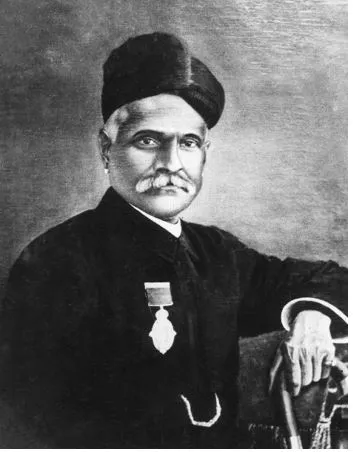


Prelims Articles
Context
In response to India’s decision to suspend the 1960 Indus Waters Treaty in the aftermath of the Pahalgam terror attack, Pakistan’s government said it could hold the 1972 Simla Agreement and “all other bilateral agreements with India” in abeyance.
What is the Shimla Agreement?
- The Simla Agreement, formally known as the Agreement on Bilateral Relations between India and Pakistan, was signed on July 2, 1972, in Shimla, India, following the 1971 Indo-Pak war and the subsequent Bangladesh Liberation War.
- The agreement was a significant diplomatic effort to normalize relations between the two countries and outline a framework for future bilateral negotiations.
- The agreement was signed by Indira Gandhi, the Prime Minister of India, and Zulfikar Ali Bhutto, the Prime Minister of Pakistan, with the primary goal of establishing peaceful relations and resolving disputes that had plagued Indo-Pakistani relations, especially regarding Jammu and Kashmir.
- Key Terms in the Simla Agreement:
- Restoration of Peaceful Relations: The agreement aimed to restore normal diplomatic and peaceful relations between India and Pakistan after the war of 1971, which had led to the creation of Bangladesh.
- Resolution of Jammu and Kashmir Dispute: Both sides agreed to resolve the dispute bilaterally without third-party intervention.
- Line of Control (LoC): The agreement effectively renamed the existing Ceasefire Line (CFL), established post-1948 after the first war, as the Line of Control (LoC).
- Return of Prisoners of War (POWs): Both countries agreed on the return of prisoners of war captured during the 1971 conflict.
- No War Pact: Both countries agreed not to resort to the use of force for solving future issues and to seek peace through dialogue. This laid the groundwork for various confidence-building measures (CBMs) that would follow.
Line of Control (LoC):
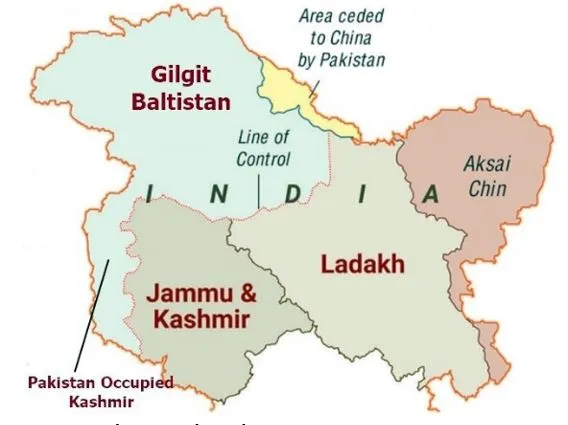 |

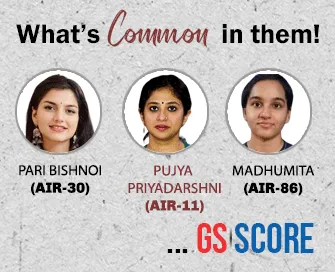
Prelims Articles
Context
In a recent move, India has increased its claim over the Central Arabian Sea as part of its extended continental shelf. This new claim, covering approximately 10,000 square kilometers, is part of India's broader strategy to assert its rights over vast oceanic areas. India has also made modifications to avoid a longstanding maritime boundary dispute with Pakistan over the Sir Creek area.
What is the Continental Shelf and Extended Continental Shelf?
- The continental shelf refers to the shallow seabed surrounding a country's landmass that extends into the ocean.
- Countries can claim rights over their continental shelf and the resources beneath it. This includes the right to mine for minerals, polymetallic nodules, and extract oil reserves.
- Typically, a coastal country has an Exclusive Economic Zone (EEZ) extending up to 200 nautical miles from its coastline, within which it holds exclusive rights to exploit marine resources, such as fishing, mining, and oil exploration.
- An “exclusive economic zone,” or “EEZ” is an area of the ocean, generally extending 200 nautical miles (230 miles) beyond a nation's territorial sea, within which a coastal nation has jurisdiction over both living and nonliving resources.
- The concept of an exclusive economic zone (EEZ) was adopted through the 1982 United Nations Convention on the Law of the Sea.
- However, if a country’s continental shelf extends beyond this 200-nautical-mile zone, it can claim the extended continental shelf, provided it can scientifically demonstrate that the seabed extends naturally from its landmass to the ocean floor.
- Countries submit their claims for this extended shelf to a UN body called the Commission on the Limits of the Continental Shelf (CLCS), which evaluates the scientific data submitted to determine whether the claim is valid.
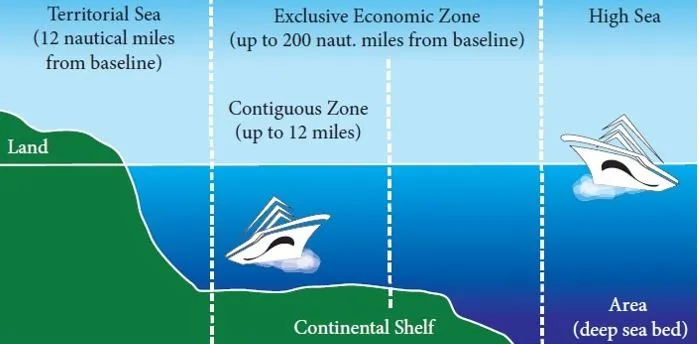
India’s Claims and Dispute with Pakistan
- India made its first submission for an extended continental shelf in 2009, which covered vast stretches of the Bay of Bengal, the Indian Ocean, and the Arabian Sea.
- As per these claims, India sought rights to valuable marine resources far beyond its original 200 nautical miles of EEZ.
- However, Pakistan raised objections to parts of India’s claim in the Western Arabian Sea.
- The main area of contention lies in the Sir Creek. Pakistan’s objections were formally lodged in 2021, and this led to the CLCS rejecting India’s original claim in the Arabian Sea in March 2023.
- The Commission, however, allowed India to submit modified claims to address the concerns raised by Pakistan.
- India’s revised claim includes an additional 10,000 square kilometers based on newly gathered data, expanding its total claim to an area roughly the size of India’s landmass—around 2 million square kilometers—almost doubling its existing EEZ.
Sir Creek
 |


Prelims Articles
Context
While the SMILE scheme has made notable progress in identifying and rehabilitating beggars in urban areas, it still faces challenges in terms of the scale of implementation and underreporting of the issue
What is SMILE Scheme?
- Launched in: 2022
- The SMILE scheme (Support for Marginalised Individuals for Livelihood and Enterprise) is a government initiative launched by the Union Ministry of Social Justice and Empowerment.
- The scheme is aimed at rehabilitating individuals involved in begging and addressing the issue of beggary in urban spaces, particularly in religious, tourist, and historical cities.
- The initiative also includes a sub-scheme for the empowerment of transgender persons.
- Key Objectives of the SMILE Scheme:
- Identification and Rehabilitation of Beggars
- Empowerment of Transgender Persons
- Progress so far: By December 2024, the scheme had successfully identified 9,958 individuals engaged in begging across the 81 cities. Out of these, 970 individuals have been rehabilitated, with 352 children among those rehabilitated.
Beggars in IndiaThe 2011 Census recorded over 3.7 lakh beggars across India, while the Socio-Economic and Caste Census (SECC) of the same year revealed that over 6.62 lakh households in rural India rely on begging or charity for survival. |


Prelims Articles
Context
The National Investigation Agency (NIA) began the process of taking over the investigation of the Pahalgam terror attack, following orders from the Union Ministry of Home Affairs (MHA).
What is the National Investigation Agency (NIA)?
- The National Investigation Agency is the specialised Central agency to investigate the terror cases in India.
- Notably, the other key central agency, the Central Bureau of Investigation (CBI), mainly investigates corruption cases, economic offences and other serious organised crimes.
- Terror cases often involve “complex inter-State and international linkages, and possible connection with other activities like the smuggling of arms and drugs, pushing in and circulation of fake Indian currency, infiltration from across the borders, etc.”
- NIA Act: The NIA Act was enacted in 2008, the year of the deadly 26/11 terror attacks on Mumbai.
- It created an agency to “investigate and prosecute offences affecting the sovereignty, security and integrity of India, security of State, friendly relations with foreign States”, and actions violating existing Acts and international treaties.
- Jurisdiction of the NIA:
- The NIA Act, amended in 2019, lists the offences the agency is empowered to investigate under a schedule. These include offences covered under
- sections of the criminal code
- the Information Technology Act
- the Arms Act
- the Anti-Hijacking Act, among others
- However, in December 2024, the Supreme Court heldthat it also has the power to investigate offences “connected” to the main Scheduled Offence already under investigation — even if it was committed by a separate person not accused in the Scheduled Offence.
- The NIA Act, amended in 2019, lists the offences the agency is empowered to investigate under a schedule. These include offences covered under
- Further, if the Central government believes that a Scheduled Offence has been committed and is to be investigated under the Act, it may, suo motu (on its own), direct the agency.
- NIA cases are tried at NIA courts.


Prelims Articles
Context
REITs and InVITs offer retail investors an opportunity to invest in large infrastructure and real estate projects in India, previously accessible only to institutional players, democratizing access to high-value assets with lower capital requirements.
What are REITs?
- Real Estate Investment Trusts (REITs) allow to invest in real estate without physically owning it.
- They work like mutual funds, pooling money from various investors to buy properties.
- The income from these properties (through rent or property sales) is then distributed to investors in the form of dividends.
- Here, income is generated through rents or capital gains.
- Dividends are paid to investors based on the units they own.
- REITs are regulated by the SEBI (Real Estate Investment Trusts) Regulations of 2014.
What are InVITs?
- Infrastructure Investment Trusts (InVITs) let retail investors invest in large infrastructure projects, which were previously accessible only to institutional investors.
- By investing in InVITs, one can get steady income from dividends and potential long-term capital appreciation as the economy grows.
- Income is received from infrastructure projects (toll plazas, highways, energy projects).
- Capital Appreciation is possible as the economy grows.
- InVITs fall under the purview of the SEBI (Infrastructure Investment Trusts) Regulations, 2014.
Key-Difference |
||
|
|
REITs |
InVITs |
|
Asset Type |
Focus on real estate assets such as commercial properties, malls, and residential buildings. |
Invest in infrastructure assets like toll roads, power plants, and pipelines. |
|
Income Generation |
Earn income through rents from properties |
Earn income through usage fees, tolls, or tariffs from infrastructure projects. |
|
Risk Profile |
Generally less risky because they focus on diversified property portfolios that generate stable rental income. |
Can carry higher risk due to operational and regulatory challenges inherent in infrastructure projects. |
|
Liquidity |
Are traded on stock exchanges, providing higher liquidity. |
Are also listed but may have lower liquidity than REITs due to the nature of infrastructure assets. |
|
Regulation |
Both REITs and InVITs are regulated by SEBI but under different regulations (REITs Regulations 2014 for REITs and InVITs Regulations 2014 for InVITs). |
|


Prelims Articles
Context
The Indian Space Research Organisation (ISRO) successfully conducted a short-duration hot test of its semicryogenic engine at the ISRO Propulsion Complex (IPRC) in Mahendragiri, Tamil Nadu.
This was the second major milestone in the testing phase of the semicryogenic engine after the first successful hot test held in March.
Key-highlights
- The recent test was a short duration hot test of the Engine Power Head Test Article (EPHTA). It included all critical systems of the engine except the thrust chamber (the part where actual thrust is produced).
- What is EPHTA? It is a test version of the engine that includes all critical engine systems except the thrust chamber, allowing engineers to focus on the performance of specific components.
What is a Semicryogenic engine?
- A semicryogenic engine uses a liquid oxidizer (like liquid oxygen) and a kerosene-based fuel (such as RP-1) that are kept at very low temperatures but not as extremely cold as fully cryogenic fuels like liquid hydrogen.
- In comparison, a full cryogenic engine uses both fuel and oxidizer at extremely low (cryogenic) temperatures.
- Semicryogenic engines are more powerful than traditional engines.
- Once inducted, it will help ISRO's launch vehicles like Gaganyaan, future GSLV Mk III upgrades, and potential heavy-lift vehicles to carry heavier payloads into space.
- Most major space powers like the United States, Russia, and China already use semicryogenic engines.


Prelims Articles
Context
The Defence Research and Development Organisation (DRDO) recently tested a crucial component of a hypersonic missile engine. This component is called the Active Cooled Scramjet Subscale Combustor. With this successful test, DRDO aims to move towards full-scale flight-worthy combustor testing soon.
About Active Cooled Scramjet Subscale Combustor
- The combustor is a core component of the scramjet engine, where fuel is mixed with compressed air to ignite and create thrust.
- The success of this test shows that India is capable of handling the extreme temperatures and pressures generated during hypersonic flight.
- Active cooling involves circulating a coolant (often the same fuel used for combustion) through channels in the combustor walls to absorb heat and prevent overheating.
- This keeps the engine from melting or failing under the extreme conditions of hypersonic flight.
What is a Scramjet?
|


Prelims Articles
Context
Smoking is a major risk factor for rheumatoid arthritis.
What is Arthritis?
- Arthritis is not a single disease but a clinical condition marked by inflammation of the joints such as the knee, hip, wrist, shoulder, ankle, and elbow.
- It manifests through pain, swelling, stiffness, and restricted movement, significantly affecting day-to-day activities.
- Arthritis can also have systemic effects beyond joints, leading to issues like eye inflammation and spinal fusion.
- Types of Arthritis
- Rheumatoid Arthritis (RA): It is an autoimmune disorder where the body's immune system attacks its own joints, causing chronic inflammation and joint damage.
- Psoriatic Arthritis: Linked to psoriasis, this form of arthritis causes joint pain along with skin issues.
- Osteoarthritis: It is degenerative form where cartilage wears down over time. It is often seen with aging but not limited to elderly people.
- Gout: It is caused by uric acid crystal deposition in joints, leading to sudden, severe attacks of pain and swelling.


Prelims Articles
Context
Observed every year on April 25, World Malaria Day is a global WHO-led initiative to raise awareness and galvanise action. The 2025 theme, “Malaria ends with us: Reinvest, Reimagine, Reignite,” underscores the urgent need to re-energise global, national, and community-level efforts.
About Malaria
- Malaria is an acute febrile illness caused by Plasmodium parasites, which are spread to people through the bites of infected female Anopheles mosquitoes. It is preventable and curable.
- It is both preventable and curable.
- It is not contagious.
- Transmission: There are 5 Plasmodium parasite species that cause malaria in humans:
- falciparumis the deadliest malaria parasite and the most prevalent on the African continent.
- vivaxis the dominant malaria parasite in most countries outside of sub-Saharan Africa.
- Other malaria species: malariae, P. ovale and P. knowlesi.
- Causes: Malaria is caused by a single-celled parasite of the genus plasmodium. The parasite is transmitted to humans most commonly through mosquito bites.
- Symptoms: Fever, Chills, General feeling of discomfort, Headache, Nausea and vomiting, Diarrhea, Abdominal pain, Muscle or joint pain, Fatigue, Rapid breathing, Rapid heart rate, Cough.
- Treatment: Artemisinin-based combination therapies (ACTs) are the most effective antimalarial medicines.
- Vaccine: In 2021, WHO recommended the RTS,S/AS01 (RTS,S) vaccine to prevent malaria among children living in regions with moderate-to-high falciparummalaria transmission.
World Malaria Report 2024 (Global Malaria Trend)
- According to the Report, significant progress was observed in global malaria elimination efforts during 2023–24.
- The number of malaria-endemic countries dropped from 85 in 2022 to 83.
- Impressively, by 2024, 26 countries that were endemic in 2000 reported zero indigenous cases for three consecutive years.
- In 2023, global malaria deaths were estimated at 597,000, with a mortality rate of 13.7 per 100,000—a decline from 622,000 deaths and a 14.9 mortality rate in 2020, reflecting consistent global progress.
- India’s remarkable strides in Malaria elimination
- India exited the High Burden to High Impact (HBHI) group in 2024, owing to sustained progress.
- India’s estimated malaria cases fell from 6.4 million in 2017 to 2 million in 2023—a 69% reduction.
- Likewise, estimated malaria deaths declined from 11,100 to 3,500, showing a 68% decrease.
- This significant drop aligns with India’s national goal to eliminate malaria by 2030.
Key-Policy & Health Infrastructure
|

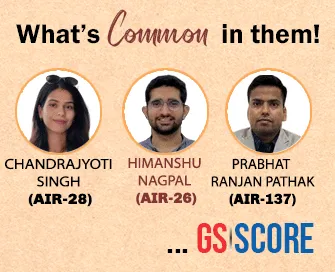
Editorials
Context
The crisis of democracies in the western world — marked by deepening political polarisation, rising populism, mistrust in institutions, and insular policies — is increasingly seen as a real-world manifestation of Dani Rodrik’s "political trilemma of the world economy," highlighting the fundamental tensions between globalisation, national sovereignty, and mass democracy.
Rodrik’s Political Trilemma:
- Definition of the Trilemma: Dani Rodrik's 2000 paper "How Far Will International Economic Integration Go?" proposed that countries can achieve only two out of three goals — deep globalisation, national sovereignty, and mass democracy — but not all simultaneously.
- Limited Globalisation: Despite widespread globalisation narratives, real international economic integration remains restricted due to national barriers, transaction costs, and protectionist policies.
- Transition from Theory to Practice: Initially academic, Rodrik's framework is now manifesting in real political and economic crises, especially in the West where balancing all three goals has proven unachievable.
The Three Choices of the Trilemma and Their Manifestations
- Democracy + Globalisation (Sacrificing Sovereignty): The European Union serves as an example where countries ceded control over key policies, leading to economic success but fuelling nationalist resentment — visible in Brexit and the rise of far-right politics.
- Globalisation + Sovereignty (Sacrificing Democracy): Countries restrict popular political influence by empowering technocratic institutions like independent central banks; backlash examples include IMF-driven fiscal measures in Kenya that compromised public welfare.
- Democracy + Sovereignty (Limiting Globalisation): Developing nations like India, and East Asian countries like China, have prioritized domestic policies over unfettered globalisation, fostering high growth but often at the cost of political freedom and restricted individual rights.
The Current Crisis in the West:
- Economic Winners and Losers: Globalisation uplifted overall living standards but wiped out manufacturing jobs in regions across the U.S., U.K., and Europe, creating disenchantment among left-behind populations.
- Rise of Populism and Insular Policies: Leaders like Donald Trump, Geert Wilders, and Viktor Orbán leveraged these grievances, advocating protectionism, immigration control, and retreat from global commitments like climate action.
- Urgent Need for New Models: Without carefully navigating the trade-offs between sovereignty, democracy, and globalisation, Western democracies risk prolonged social unrest, institutional decay, and worsening inequality.
Practice Question
Q. Critically analyse Dani Rodrik’s Political Trilemma in the context of the ongoing crisis in Western democracies. How can nations balance democracy, sovereignty, and globalisation without undermining political stability and economic welfare?

Editorials
Context
A U.K. Supreme Court ruling has declared that under the Equality Act 2010, only biological women and not transwomen qualify as "women," intensifying global debates on gender rights.
U.K. Supreme Court Ruling Details
- Scope of the Ruling: The court unanimously ruled that ‘woman’ and ‘sex’ under the Equality Act 2010 refer strictly to biological definitions, excluding transwomen from being legally treated as biological women.
- Impact on Trans Rights: Despite possessing a Gender Recognition Certificate, transwomen would not be entitled to protections exclusively reserved for biological women under the Act.
- Political Context: The Scottish government's earlier push for gender law reforms, led by Nicola Sturgeon, weakened following public backlash and her subsequent resignation in 2023.
Implications for Rights and Institutions
- Effect on Public Spaces: The ruling clarified that only biological women could access single-sex spaces like changing rooms, hospital wards, and participate in women-only sports.
- Responsibility of Institutions: The Equality and Human Rights Commission (EHRC) must ensure creation of unisex or neutral spaces to accommodate trans persons in future guidelines.
- Impact on Sports: The decision will reinforce trends in global sports, where federations for athletics, cycling, and aquatics have banned transwomen from women’s categories.
Broader Lessons for Policymaking
- Balancing Rights and Protection: The judgment emphasized that legal clarity should not victimize any particular group, urging balanced accommodations for trans rights.
- Indian Context Parallel: India’s experience with the Transgender Persons (Protection of Rights) Act, 2019 highlights that poorly framed laws can lead to further marginalization of trans individuals.
- Need for Inclusive Legal Reforms: Future gender laws must carefully protect the basic rights of transpersons, while also addressing concerns of biological women fairly and thoughtfully.
Practice Question
Q. Critically examine the recent U.K. Supreme Court ruling interpreting the terms ‘woman’ and ‘sex’ under the Equality Act 2010. In this context, discuss the challenges of balancing trans rights and biological women’s protections within a legal framework, with reference to India's approach under the Transgender Persons (Protection of Rights) Act, 2019.


Editorials
Context
The IMF report highlights that the economic benefits of Artificial Intelligence (AI) could outweigh its environmental costs, stressing the importance of integrating renewable energy into AI infrastructure development.
AI’s Energy Demand and Economic Impact
- Economic Gains vs. Environmental Costs: The IMF asserts that AI's economic benefits will likely surpass the environmental costs associated with increased energy demand, especially if renewable energy adoption is prioritized.
- Country-Specific Impact: Nations with strong renewable energy bases will experience lower social and environmental costs as they expand AI infrastructure, offering a strategic advantage in sustainable AI development.
- India's Current Position: India’s AI infrastructure, particularly the government-backed IndiaAI Mission, is currently not large enough to significantly strain the national energy mix, but a renewable-centric approach remains essential.
Renewable Energy Opportunities in AI Sector
- Electricity Demand Surge: According to the IMF, AI expansion in the U.S. could raise electricity prices by up to 9%, highlighting the critical need to integrate renewables to mitigate emission surges from conventional power sources.
- Captive Renewable Potential: Data centres offer unique opportunities for captive renewable energy systems; in India, solar cell installations on large data centre campuses are an emerging model.
- Role of Nuclear Energy: Small Modular Reactors (SMRs), alongside renewables, can power emerging data centre hubs, preventing substantial carbon emissions and supporting clean AI expansion.
Broader Environmental Footprint of AI Industry
- Resource Extraction Challenges: The AI industry also demands large-scale mineral mining, water usage, and causes pollution during the manufacturing of electronics, necessitating sustainable resource management.
- Electronics Manufacturing in India: As India aims to expand its electronics manufacturing sector, sustainable practices must be embedded to manage AI-related ecological impacts effectively.
- Alignment with Net-Zero Goals: To achieve its Net Zero 2070 target, India must scale down conventional emission sources while ensuring that AI and electronics industries grow sustainably without exacerbating environmental degradation.
Practice Question
Q. Discuss the environmental challenges associated with the expansion of Artificial Intelligence infrastructure, particularly data centres.

